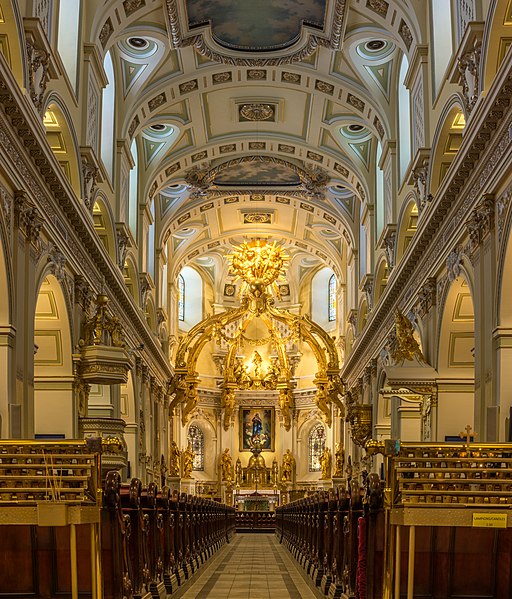
Basilique Cathédrale Notre Dame de Québec, interior view towards altar, Quebec city. Photo by Wilfredor.
Now let the stranger enter the church of Notre-Dame de la Recouvrance, after vespers. It is full, to the very porch—officers in slouched hats and plumes, musketeers, pikemen, mechanics, and laborers. Here is [Charles Jacques Huault de] Montmagny himself; Repentigny and Poterie, gentlemen of good birth; damsels of nurture ill-fitted to the Canadian woods; and, mingled with these, the motionless Indians, wrapped to the throat in embroidered moose hides.
Le Jeune, not in priestly vestments, but in the common black dress of his Order, is before the altar; and on either side is a row of small red-skinned children listening with exemplary decorum, while, with a cheerful, smiling face, he teaches them to kneel, clasp their hands, and [make the] sign [of] the cross.

Photo taken in 1909, inside the Basilica Cathedral, on the occasion of the opening of the 1st Plenary Council of Canada.
All the principal members of this zealous community are present, at once amused and edified at the grave deportment, and the prompt, shrill replies of the infant catechumens; while their parents in the crowd grin delight at the gifts of beads and trinkets with which Le Jeune rewards his most proficient pupils.
Francis Parkman, The Jesuits in North America in the Seventeenth Century (Boston: Little, Brown, and Company, 1897, 1:253–54.
Short Stories on Honor, Chivalry, and the World of Nobility—no. 844









